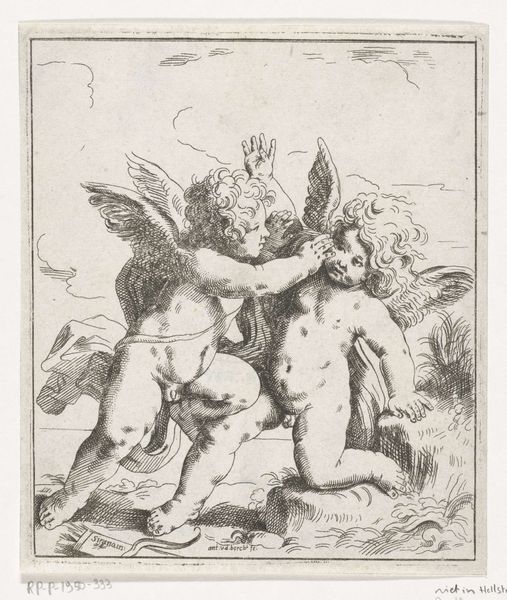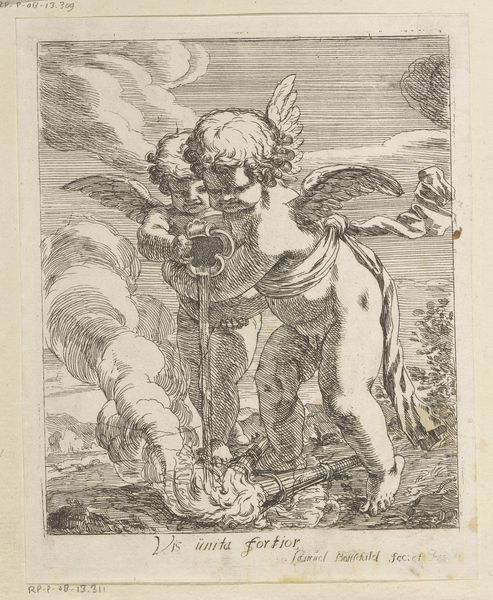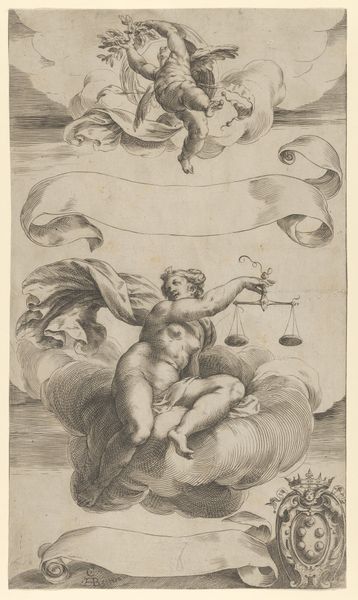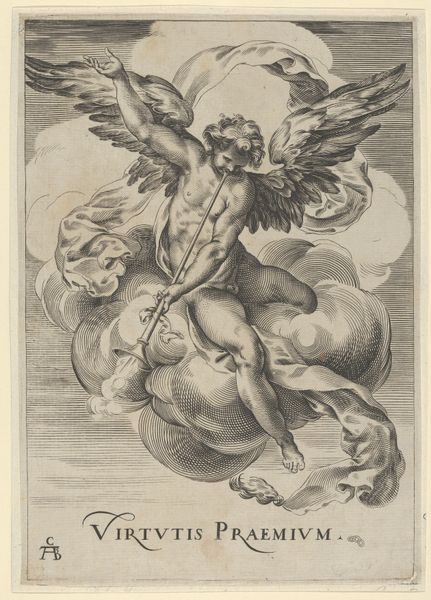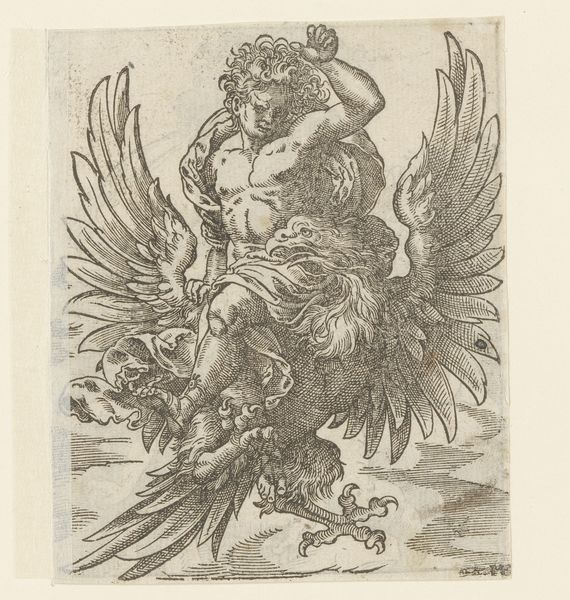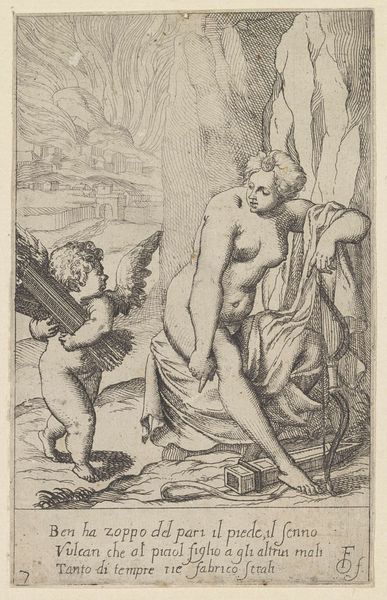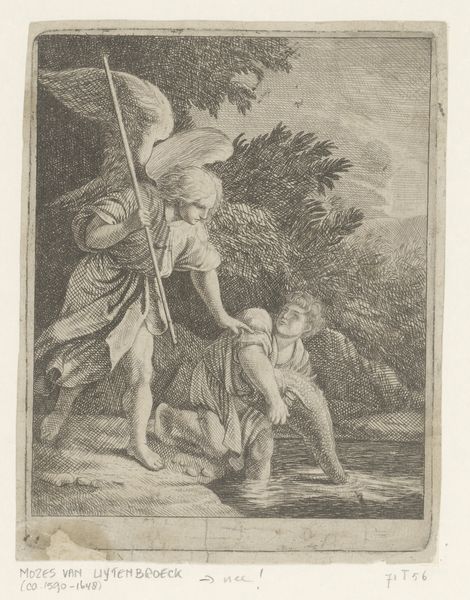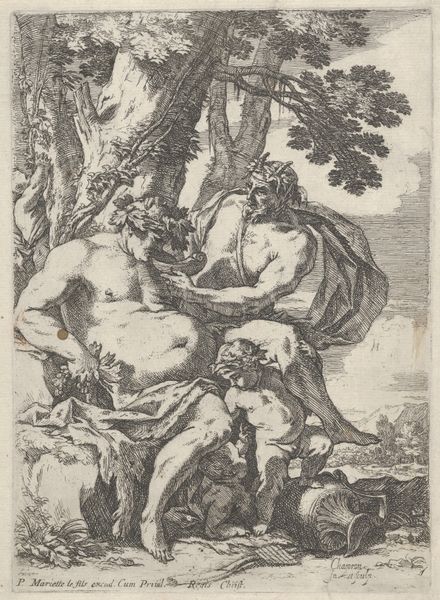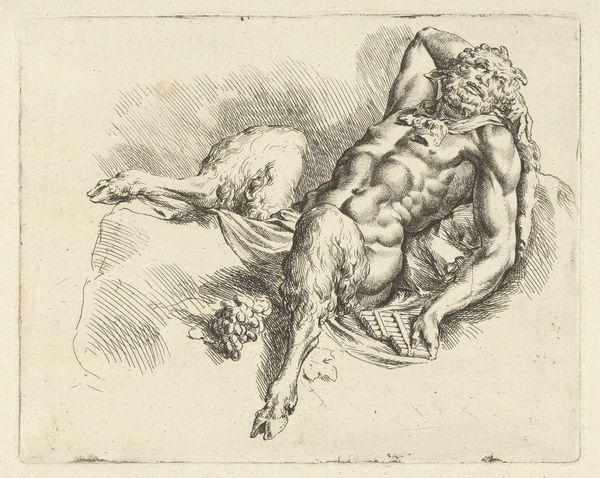
print, engraving
#
baroque
# print
#
figuration
#
genre-painting
#
nude
#
engraving
Dimensions: height 169 mm, width 133 mm
Copyright: Rijks Museum: Open Domain
This print, made by Samuel Bottschild in the Netherlands sometime in the 17th century, depicts two putti, or cherubic figures, struggling over a palm branch. The inscription reads ‘Discordia concordes,’ or ‘Discordant harmony.’ In the Dutch Republic, prints were a booming industry. They played a vital role in disseminating information, shaping public opinion, and reflecting the values of Dutch society. Bottschild’s print participates in a long tradition of allegorical imagery that was used to comment on political and social life. The putti, often associated with love and innocence, are here engaged in a tussle. Is Bottschild suggesting that even in heavenly realms, conflict is inevitable? Or is it a reflection on the competitive nature of Dutch society, where merchants and artists vied for success? These are the questions social historians ask. By examining this print alongside other artworks and historical documents from the period, we can gain a deeper understanding of the complex relationship between art and society in the Dutch Golden Age.
Comments
No comments
Be the first to comment and join the conversation on the ultimate creative platform.
